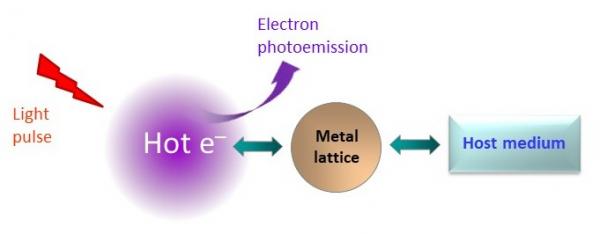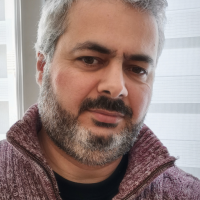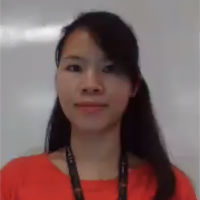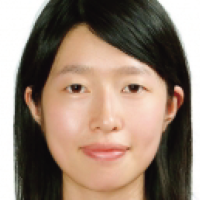Ultrafast Plasmonics and Nanophotonics
Noble metal nanoparticles (NPs) exhibit remarkable optical properties linked with the localized surface plasmon resonance (LSPR) phenomenon, which stems from the confinement of conduction electrons at scales much smaller than the wavelength of light.
Beyond, the interaction of NPs and ultrashort laser pulses results in a series of transient energy exchanges along which the metal electron distribution is put off-equilibrium by multiphoton processes and relaxes then back to the stationary state.
This generation of a “hot electron” gas and its dynamics then lead to interesting phenomena, which can be further exploited in photonic, chemical or biomedical applications: nonlinear optical response, localized and sudden overheating, which may itself induce the mechanical excitation of the NP, photoluminescence, electron emission, production of free radicals in water, cavitation.
The photothermal conversion process is very efficient when the radiation wavelength matches the LSPR mode of the NPs, enabling an optimal energy input.
Besides, the scope of integrated optical circuits has led to smaller and smaller photonic devices that can handle higher and higher optical powers.
This brings to a situation where the quantum nature of light cannot be ignored anymore since the mechanical effects of the radiation pressure are almost comparable to the size of the objects.
However, this effect can be fruitfully exploited if the mechanical resonance can be coupled to an optical resonance. In such a configuration one can use light to control the motion of the device and, reciprocally, mechanically change its optical behavior.
Our team specializes in modeling, measuring and exploiting the optical properties of photonic nanostructures: metal NPs and photonic crystals.
The theme Ultrafast Plasmonics and Nanophotonics gathers 5 different research topics:
• Plasmonic nanoparticles: Stationary and ultrafast transient optical responses
• Dynamics of hot electrons and applications
• Photothermal conversion in metal nanoparticles and applications
• Near field optomechanics in photonic systems
• Photonic engineering of infrared surface waves
The team is affiliated to different Research Groups (GDRs) of CNRS:
The team belongs to the Labex NanoSaclay of Université Paris-Saclay
and to the Institut d’Alembert in ENS Paris-Saclay.










